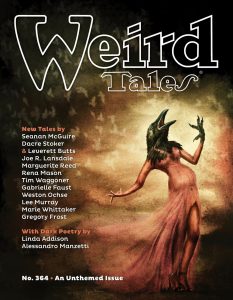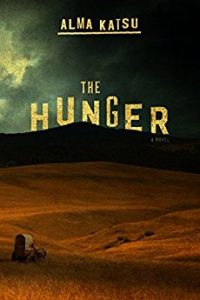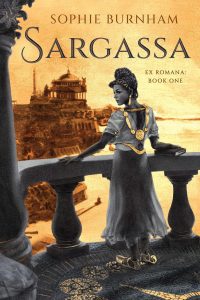Rich Horton Reviews Short Fiction: Uncanny and Weird Tales
 Uncanny 3-4/21
Uncanny 3-4/21
Weird Tales #364
The March-April issue of Uncanny is pretty remarkable. All of the stories are strong. Catherynne M. Valente opens with “The Sin of America“, which expands on the “sin eater” concept in purposefully American fashion, with a bit of the vibe of Shirley Jackson’s “The Lottery” to boot. American fashion here is represented by a clichéd upper Midwest diner and way too much food (though it seems to change each month). Ruby-Rose has been treated poorly (by men and the economy) – could her consumption of “America’s” sins also suggest the disproportionate burden victims are made to bear? She has been chosen to eat our collective sin, in the form of an obscenely huge diner meal. As she eats, we hear her story: single mother, dance teacher until her feet gave out, had her chance to do something bigger taken from her by the man who got her pregnant… and we hear the stories of some of the other people in the diner, and their sins (and virtues), and hints of some terrible crimes. The characterizations are acute, and the weight of collective guilt builds powerfully.
Dominica Phetteplace‘s “The Perils of a Hologram Heart” is (thankfully, I suppose!) completely different: it’s far-future SF about a woman from our time who has been revived from cryostasis by aliens a couple of millennia into a future in which alien technology allows people to choose their own time of death (among many other modifications). It turns out her cancer keeps coming back, so she has to keep replacing organs… which has an impact on her relationship with her boyfriend, an immortal from this future era. It’s lightly sardonic, quite clever, and imaginative.
“Colors of the Immortal Palette” by Caroline M. Yoachim is also about immortality, but not in the same way. It’s told by Mariko, an artist’s model in 19th-century France who wants to be an artist. Her milieu includes a number of historical painters and models, but her particular patron is a curious kind of vampire who can live forever by taking energy from people. Mariko convinces him to turn her, and we see her life well into the future, through various political and artistic eras, as she forms relationships with many different people – and becomes a great painter. That last detail is hard to bring off, and I thought it a bit strained, but that’s a small part of the story, which is a fine meditation on immortality (of both people and art), colors, fashions in art, and people.
Carrie Vaughn‘s “The Book of the Kraken” is a nice sea story told from the point of view of young Matthew Vale, serving with his older brother on a British ship patrolling American waters (during the War of 1812, perhaps?). They encounter a small ship carrying a single passenger, a young woman. This ship is remarkably fast, and the crew soon learn that it is propelled by what seems to be a huge, intelligent, squidlike creature. The woman wants to trade information – her knowledge of a pirate’s location for some hints as to where her own brother’s ship might be. Matthew’s captain agrees to the trade – putting Matthew in a moral quandary when the captain then orders them to betray their agreement and try to capture the “kraken.” Solid stuff, possibly part of something bigger.
“Eighteen Days of Barbareek” by Rati Mehotra is an intriguing piece based on the Mahabharata War. It’s told from the POV of the decapitated head of Barbareek, a great warrior, after Krishna’s intervention forced him to stay out of what the story makes clear is a horribly destructive and pointless war. Barbareek’s snarky modern attitude (as portrayed here) serves to restate the message for contemporary readers… and (as I learned after the fact) the effect on Barbareek was to make him a messenger of peace.
The best new story here is “Where Oaken Hearts Do Gather” by Sarah Pinsker. Pinsker is a musician who often writes about music in a very intriguing way. This story is about folk music and the folk tradition and process in way that is reminiscent of her Hugo nominee “Wind Will Rove”, but is otherwise not like it at all. This is told as a series of comments by a variety of people trying to understand the (fictional) traditional folk song “Where Oaken Hearts Do Gather”. As we go through the comments on each verse of the extended version, in among the folk-nerdy discussion of variant versions, bad modern covers, and disputes about word choices, a story develops, involving attempts to track the origin of the song to a specific location in England, and also involving different possibilities about what the lyrics (which concern two lovers meeting, a stolen heart, and oak trees) really mean. One of the commenters seems to be following up on a previous writer’s trip to a potentially related village… though the previous writer has disappeared. The destination is clear enough, then, but the journey is good meaty fun.
The hopefully unkillable Weird Tales is back again – perhaps in line for a 100th Anniversary issue by 2023! Number 364 is just out, and there is some fine dark fiction here. Seanan McGuire‘s “Too Late Now” is solid post-apocalyptic SF, the menace here being alien plants. The story tells of Boston, who is on a scavenging mission with Jersey, and of Jersey’s unfortunate mistake that gets her killed. When Boston returns, she is regarded with suspicion… leading to a dark, morally instructive conclusion. Marguerite Reed‘s “The Beguiled Grave” is even darker, more vicious, as a powerful woman named Varka finds herself in a particularly awful dungeon. This is a strategy to free the disguised King, whom she believes in imprisoned there as well. But Varka’s motivations, and her true nature, are less noble than the opening might suggest. The most intriguing story here comes from Dacre Stoker & Leverett Butts, “Last Days“. Noel Stoker (Bram’s son) visits his father one last time as Bram is dying, and receives from him some material from the time of his composition of Dracula. We learn something of the real story behind Stoker’s inspiration for the novel, involving Renfield and Harker and a trip to Transylvania that goes wrong, but in which Renfield meets a curious individual…. You can see what’s happening, to be sure, but it works well. (Of the co-authors, Dacre Stoker is a collateral descendant of Bram Stoker.)
Recommended Stories
“Where Oaken Hearts Do Gather”, Sarah Pinsker (Uncanny 3-4/21)
“Last Days”, Dacre Stoker & Leverett Butts (Weird Tales #364)
“The Sin of America”, Catherynne M. Valente (Uncanny 3-4/21)
“Colors of the Immortal Palette”, Caroline M. Yoachim (Uncanny 3-4/21)
Rich Horton works for a major aerospace company in St. Louis MO. He has published over a dozen anthologies, including the yearly series The Year’s Best Science Fiction and Fantasy from Prime Books, and he is the Reprint Editor for Lightspeed Magazine. He contributes articles and reviews on SF and SF history to numerous publications.
This review and more like it in the May 2021 issue of Locus.
 While you are here, please take a moment to support Locus with a one-time or recurring donation. We rely on reader donations to keep the magazine and site going, and would like to keep the site paywall free, but WE NEED YOUR FINANCIAL SUPPORT to continue quality coverage of the science fiction and fantasy field.
While you are here, please take a moment to support Locus with a one-time or recurring donation. We rely on reader donations to keep the magazine and site going, and would like to keep the site paywall free, but WE NEED YOUR FINANCIAL SUPPORT to continue quality coverage of the science fiction and fantasy field.
©Locus Magazine. Copyrighted material may not be republished without permission of LSFF.







